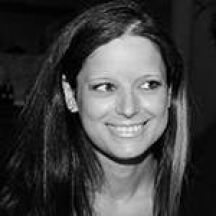Ever since its invention back in the 18th century, photography has been documenting life. At the same time, it focuses on inviting audiences to a rather subjective world while trying to be taken seriously as an art form. Photography has always been considered a male dominated profession, but luckily things are changing. Scholars, writers, bloggers, photography students and enthusiasts have been giving due to the female pioneers of the field. Most of them were always standing and/or hiding in the shadows, oblivious to how much they could acclaim and accomplish. Arguably, the technique, concepts and themes female photographers use, differ from those of male photographers. When most women were convinced that their place was in the kitchen and certainly not in the dark room, there were those who were struggling to surpass their male counterparts and work towards gaining respect and recognition for their work.
I'm interested in loving, beautiful, sexy images. I also want the images to be a turn on, create an adrenaline high, a rush of desire so intense that the act of looking is sexual.
© Tee Corinne
Tee Corinne (American photographer, 1943-2006) was so much more than an accomplished photographer; she was a published author, a prolific artist and an activist. She was originally introduced into the techniques and applications of visual art by her mother. She studied Painting, Printmaking and Sculpture. Throughout the 1960’s Corinne was exhibiting her work all over the U.S., but it wasn’t until the early 1970’s that she began to explore the feminist and sexual content for which she is best known. Corinne realised early on that even though her art education allowed her to depict male genitals, the lack of female genitalia imagery somehow meant less personal power for women. Corinne then decided to produce artistic images of vulvas, and self-published the Cunt Coloring Book, reclaiming the word ‘cunt’. At 32, she photographed women kissing, hugging and making love. Most of these photographs were used as the basis for Victoria Hammond's illustrations in Loving Women, one of the first lesbian ‘sex manuals’.
Tee went on to co-facilitate the Feminist Photography Ovulars and co-found The Blatant Image and A Magazine of Feminist Photography. Her novels, collections of short stories, essays, anthologies, poems and artists’ books and publications all revolve around feminist issues and the role of female and lesbian sexuality. Her mixed media drawings about growing up in an alcoholic family, have been the subject of a video interview by Jane Scott Productions. Portfolios of her art have been published in Lesbian Subjects, Feminist Studies, Gallerie: Women's Art, The Advocate, Philadelphia Gay News, The Lesbian Inciter, I Am My Lover and Femalia. At 37, Corinne was one of ten invited artists whose work was exhibited in the Great American Lesbian Art Show.
Tee was fearless; she consistently chose women of color, large women, older women and women with disabilities as models. She used techniques involving multiple prints, solarization, images printed in negative and multiple exposures to protect the privacy of these women. Occasionally, printers would refuse to print her work and art galleries would refuse to exhibit it. Her legacy includes many great works of art and when she was 48, she was chosen as one of the 50 most influential homosexuals of the decade. At 54, Corinne received the Women’s Caucus for Art President’s Award for her service in the arts.

Jacqueline Livingston (American photographer, 1943-2013) picked up a camera for the first time when she was 19. Her work mostly explores the role of women as people and as artists and she was always keen on exploring the boundaries of intimacy and propriety. In the mid 1960’s, she assembled a national student activist organization, together with her then husband. They would mainly demonstrate for civil rights, education, against corrupt politicians and against the war in Vietnam. Livingston helped raise awareness on feminist issues and worked for social and political change. She turned to photography to cope with the difficulties in her personal life and began exploring family life, gender roles and male sexuality through her art.
By 1976, Jacqueline’s work had brought her to Cornell University to teach photography. Her inflammatory photographic exhibitions featuring male genitalia caused controversy on campus and the entire community. It was the pictures of her naked son in masturbatory poses that finally got her fired from Cornell in 1978. Public opinion is that Livingston was one of the first victims of the newly created child pornography legislation in the USA. Even Kodak stigmatized her, labelled her work as pornography and confiscated some of her films. Livingston was investigated by the FBI, while trying to prove that her sole intention was to capture the beauty of the male body at all ages and that her work was meant to change prescriptive notions about female sexuality and art. She finally sued Cornell for firing her and alleged sex-biased employment discrimination. Her work is in collections of major museums around the world and her name will probably always be associated with breaking the rules and social mores.
We will continue talking about female names that left their mark in photography and about contemporary female photographers who are still to emerge. There are a lot of female photographers out there deserving of praise and we can only hope to cover as many of them as we can. Please, follow this space to find out more.
Wilhelm Reich’s book The Mass Psychology of Fascism influenced my thinking about child rearing. According to Reich, being raised in sexual freedom (i.e. masturbation is healthy, premarital sex and sex education are a person’s human right) is the first step in structuring personalities who will not follow authority.








